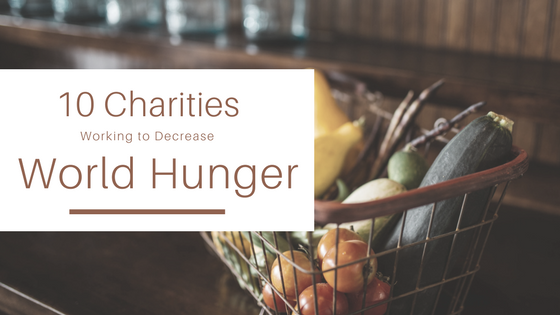The Hunger Project
The Hunger Project works throughout 22 countries to end hunger and poverty. While the organization does not distribute food, it works with rural and poverty populations to teach life skills to overcome hunger. A network of individuals and company partners work in more than 24,000 communities, reaching 20 million people around the world. The Hunger Project is leading communities to make improvements in health, education, gender-based violence, hunger and income.
CARE
As a community-based effort, CARE works to improve education, access to health care and increase income opportunity. Operating in 94 countries across the globe, more than 80 million individuals are reached through 1,000 different projects. CARE also responds to emergencies to address individual and community survival needs.
Concern Worldwide US
Reaching the poorest communities in the world, Concern Worldwide US helps fight malnutrition, disease and disasters. Emergency response is provided after disasters to help families and communities rebuild. Concern Worldwide US helps communities suffering from the stresses of climate change by teaching agricultural skills. Since 1968 the organization provides long-term development in over 50 countries.
International Rescue Committee
International Rescue Committee (IRC) gives emergency response and aid to refugees and individuals displaced by war, natural disaster or persecution. Working in over 40 countries including the United States, IRC provides long-term assistance by resettling and teaching life skills for refugees to become self-sufficient. The IRC responded to the earthquake disaster in Haiti in 2010 and is currently working to improve advocacy and resettlement of Iraqis misplaced by war.
Innovations for Poverty Action (IPA)
The Innovations for Poverty Action (IPA) helps improve education, health care, finance, agriculture, government and social protection to help those in poverty. IPA works with businesses, governments and non-governmental organizations to develop anti-poverty interventions. Research for anti-poverty intervention is analyzed and researched in controlled studies to publicize poverty relief intervention recommendations. 20 countries are participating in IPA programs to further research reaching over 100 million people across such countries as Africa, South America and Asia.
Action Against Hunger
Action Against Hunger established in 1979 with the mission to end child malnutrition and provide safe drinking water to poverty communities. Since its start, the humanitarian organization outreached to over 40 countries and reduced the global mortality rate of malnourished children under five. To reduce the global mortality rate, the Action Against Hunger Scientific Committee created a therapeutic milk formula designed to treat acute malnutrition. Action Against Hunger partners with top food and beverage industry leaders to raise awareness about global hunger.
International Childcare
International Childcare (ICC) helps children to relieve poverty and sickness while providing children education all over the world. The programs offered to children in poverty focus on providing shelter, health care services and education. With numerous projects in different countries, the ICC sees an average of 400 patients a day treating malnutrition, HIV/AIDS, tuberculosis and other diseases. One of the main programs offered through ICC is caring for children with disabilities in the Dominican Republic.
Oxfam
Working with 17 national organizations to fight poverty, Oxfam is dedicated to finding the causes and effects of poverty. Emergency relief services reached over 90 countries since 1951. Today, Oxfam responds to over 30 emergency situations across the world. Oxfam supplies long-term development programs, emergency assistance and political advocacy to those in poverty. The organization also deals with issues including climate change, gender equality, indigenous and minority rights, natural resources, and HIV/AIDS.
Population Services International (PSI)
Population Services International (PSI) provides affordable health care products and services to communities through health education. PSI dedicates itself to family planning, HIV/AIDS treatment, gender-based violence, maternal health and clean drinking water. Programs operate throughout 60 countries and help raise awareness toward treatment of diseases related to high mortality rates in children under five.
Project Healthy Children (PHC)
Working with national governments and manufacturers around the world, PHC works with producers to supply staple foods with essential micronutrients to overcome hunger. Food fortification reaches over 55 million people in countries such as Liberia, Honduras and Rwanda. Fortified foods are provided to an individual for an average of 25 cents per year.




